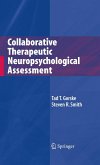SUMMARY Meehl and Rosen (1955) Wrst demonstrated the importance of base rates in psychologicalassessmentnearlyWvedecadesago. Theseauthorsstated, Thechief reasonforourignoranceofthebaseratesisnothingmoresubtlethanourfailureto computethem (pg. 213). Researcherscontinuetoreportthatbaseratesarestill largelybeingignored(Duncan&Snow,1987;Gouvier,Hayes,&Smiroldo,1998). It isbecauseofthisgapintheliteraturethatthecurrentbookPractitioner sGuideto SymptomBaseRatesintheGeneralPopulationandthepreviousbookPractitioner s GuidetoSymptomBaseRatesinClinicalNeuropsychology(McCaVreyetal. 2003) werecreated. Ifthediagnosticaccuracyofourclinicaldecision-makingprocessand ourtestinginstrumentsaretobeestimated,wemustcalculatethebaseratesofthe symptoms,disorders,anddiseasesweassessforonaregularbasis. Itishopedthatthepresentbookwillaidneuropsychologicalpractitionersand otherhealthcareprofessionalsintheevaluationofthepresentingcomplaintsoftheir patients. Baseratesareofutmostimportanceintheestimationofdiagnosticaccuracy ofneuropsychologicalandpsychologicalassessment,aswellasanyotherformof testing,aswellasintheinterviewanddiVerentialdiagnosticprocess. Itishopedthat thesetwovolumeswillencourageadditionalresearcherstoreportbaserateinfor- tion as well as detailed information regarding the population from which this informationwasobtained. Inordertoestimatetheaccuracyofourclinicaldi- noses/decisionsthataremadeonadailybasis,wemustunderstandtheimportanceof baserateinformationandmakeeveryattempttocollectandreportthisdata. Last, thecurrentintroductionismeanttoprovideabriefoverviewofbaseratesandtheir utilityinclinicalneuropsychology. Ifthereaderwishestogainmoredetailedund- standing regarding base rates s/he is referred to Practitioner s Guide to Symptom BaseRatesinClinical Neuropsychology(McCaVrey,Palav,O Bryant,&Labarge, 2003)aswellasothersources(e. g. ,Gordon,1977;Gouvier1999,2001;Meehl& Rosen,1955). Key for Using Tables Gender: Males/Females Age: Mean (Standard Deviation); Range Race: Caucasian/African American/Hispanic/Asian Native American/Other Timeframe: timeframe of symptom report SAMPLE TABLE CHARACTERISTICS Schaughency, et al. (1994) n = 943 Diagnostic Criteria: Gender: 483/460 Age: 15 Race: Population Setting: community Nationality: New Zealand Other Sample Characteristics: Method of Reporting: self-report Timeframe: current 5 II / Control Groups: Adult COLLEGE STUDENTS Machulda, et al. (1998) Population Setting: college n = 141 undergraduates Diagnostic Criteria: Nationality: US Gender: 49/92 Other Sample Characteristics: Age: 20. 7 (18-22) Method of Reporting: self-report Race: 268/88/66/7/0/9 Timeframe: Symptom % Symptom % anxiety 87 headache 57 concentration difference 80 irritability 74 depression 71 sensitive to light 26 disordered sleep 41 sensitive to sound 16 dizziness 19 fatigue 83 Freeston, et al. (1996) Population Setting: university n = 583 undergraduates Diagnostic Criteria: Nationality: Canada Gender: 216/367 Other Sample Characteristics: Age: 22. 6 (4. 6) Method of Reporting: self-report Race: 268/88/66/7/0/9 Timeframe: Symptom % Symptom % difficulty concentrating or 16. 5 muscle tension, aches, or 17.
"Base Rates are an extremely important part of clinical practice. This book provides that information and does so in a concise and easy reference manner. It is complete with thousands of symptoms, as well as representative populations. For neuropsychologists, this is definitely worth owning, especially in conjunction with the earlier publication [Practitioner's Guide to Symptom Base Rates in Clinical Neuropsychology]. 4 Stars!"
Christopher J. Graver, PhD, University of Michigan Health System. Published in Doody's Book Review.
"... a valuable guide to locating literature that offers answers to questions we may want to answer in clinical and forensic evaluations ... a valuable resource for clinical, forensic, and research use ...."
Paul R. Lees-Haley, Ph.D., Huntsville, Alabama, Applied Neuropsychology
Christopher J. Graver, PhD, University of Michigan Health System. Published in Doody's Book Review.
"... a valuable guide to locating literature that offers answers to questions we may want to answer in clinical and forensic evaluations ... a valuable resource for clinical, forensic, and research use ...."
Paul R. Lees-Haley, Ph.D., Huntsville, Alabama, Applied Neuropsychology








